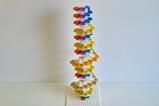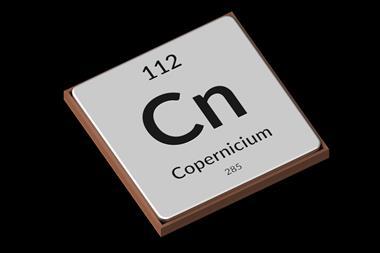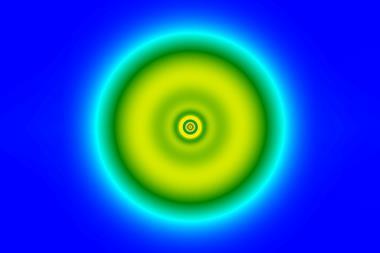The electronic structure of oganesson, also known as element 118, suggests it is a semiconductor, in a break from the trend seen in all other noble gases and continuing to suggest the end of periodicity.1
Oganesson is the heaviest element known. It was first synthesised by a team led by Yuri Oganessian – after whom the element is named – from the Joint Institute for Nuclear Research in Dubna, Russia, and Lawrence Livermore National Laboratory in the US. To date only a handful of atoms have been made with half-lives of around 0.58ms, making experimental work impossible.
Instead, researchers led by chemist Peter Schwerdtfeger from Massey University in New Zealand have used state-of-the-art models to predict oganesson’s band gaps, calibrating their model against the known gaps for the other noble gases from neon to xenon. While these noble gases are insulators with electronic gaps ranging from 21.51eV to 9.32eV, the team predict oganesson’s band gap to be around 1.5eV, suggesting it is a metallic semiconductor.
The finding is in line with the Massey group’s previous look at oganesson’s electron localisation, which suggested its orbitals lose their shell structure and form a diffuse ‘gas’ of charge.2 Both phenomena are explained by the element’s immense nucleus, which creates relativistic effects and changes the energies of nearby electrons. While relativistic effects are seen elsewhere on the periodic table – for example giving gold its unique colour or making mercury a liquid at room temperature – they are more pronounced in heavier elements. For oganesson, this creates such a radical departure from group trends that the rules of the periodic table appear to be broken.
‘Relativistic effects confound naive expectations,’ says Roderick Macrae from Marian University, US, who believes the paper’s finding to be sound. ‘Oganesson is likely to be less “noble” than the group 12 element copernicium, which represents the closing of the 7s and 6d [electron] shells.’
Earlier predictions from the Massey group about the properties of copernicium and flerovium were confirmed in the lab by Robert Eichler, a chemist at the Paul Scherrer Institute in Switzerland, through rapid experiments to determine sublimation enthalpies. ‘These exciting predictions will guide us in designing ultrafast chemical techniques to experimentally confirm these results … and assess the character of oganesson,’ Eichler says. ‘But we will have to boost our experimental speed, which is extremely challenging. Hopefully, a more long-lived isotope of oganesson will be available in the future.’
References
1 J–M Mewes et al, Angew. Chem., Int. Ed., 2019 DOI: 10.1002/ange.201908327
2 P Jerabek et al, Phys. Rev. Lett., 2018, 120, 053001 (DOI: 10.1103/PhysRevLett.120.053001)

















2 readers' comments